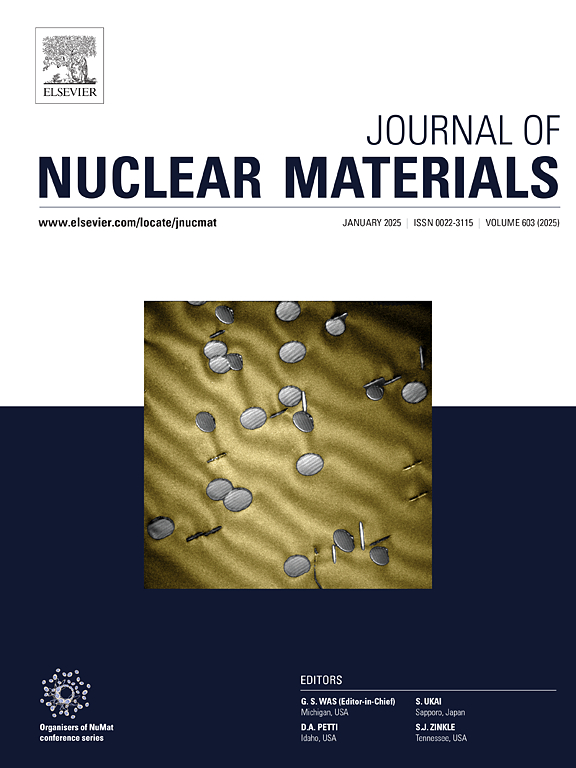Comparative analysis of the long-term strength of Russian ferritic-martensitic reactor steels
IF 2.8
2区 工程技术
Q3 MATERIALS SCIENCE, MULTIDISCIPLINARY
引用次数: 0
Abstract
The paper presents the results of long-term high-temperature creep tests of Russian reactor steels with ferritic-martensitic structure (the duration of some measurements exceeded 8 years). In the current study, the structural-phase transformations, characteristics of creep and long-term strength at 650 °C, 670 °C, and 700 °C under 60–140 MPa in oxide-free and oxide containing steels were determined. The creep tests were performed on specially designed transverse micro-specimens prepared from fuel elements cladding used in the fast-neutron reactor. The creep velocity of the ferritic-martensitic reactor steels was established to be specified by resistance of lath martensite and ferrite structures to diffusion processes of return and recrystallization. The most heat-resistant oxide-free steel contains the largest amount of refractory elements and carbides. The best heat resistance was observed for the steel hardened with thermal-resistant yttrium-titanium nanooxides. The samples made of this steel demonstrated one order less creep velocity at 700 °C under 100 MPa and 100-fold time to fracture in comparison with the oxide-free reactor steels.

求助全文
约1分钟内获得全文
求助全文
来源期刊

Journal of Nuclear Materials
工程技术-材料科学:综合
CiteScore
5.70
自引率
25.80%
发文量
601
审稿时长
63 days
期刊介绍:
The Journal of Nuclear Materials publishes high quality papers in materials research for nuclear applications, primarily fission reactors, fusion reactors, and similar environments including radiation areas of charged particle accelerators. Both original research and critical review papers covering experimental, theoretical, and computational aspects of either fundamental or applied nature are welcome.
The breadth of the field is such that a wide range of processes and properties in the field of materials science and engineering is of interest to the readership, spanning atom-scale processes, microstructures, thermodynamics, mechanical properties, physical properties, and corrosion, for example.
Topics covered by JNM
Fission reactor materials, including fuels, cladding, core structures, pressure vessels, coolant interactions with materials, moderator and control components, fission product behavior.
Materials aspects of the entire fuel cycle.
Materials aspects of the actinides and their compounds.
Performance of nuclear waste materials; materials aspects of the immobilization of wastes.
Fusion reactor materials, including first walls, blankets, insulators and magnets.
Neutron and charged particle radiation effects in materials, including defects, transmutations, microstructures, phase changes and macroscopic properties.
Interaction of plasmas, ion beams, electron beams and electromagnetic radiation with materials relevant to nuclear systems.
 求助内容:
求助内容: 应助结果提醒方式:
应助结果提醒方式:


